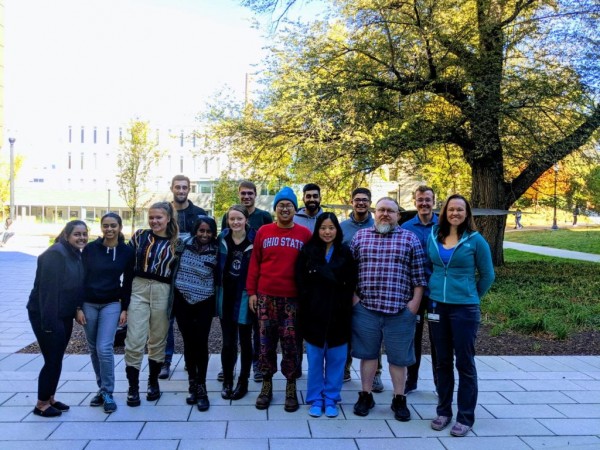Curating Media for Textbooks

Working alongside her lab manager and undergraduate students, Dr. Elizabeth Kirby is in the process of compiling an Introduction to Behavioral Neuroscience textbook. As the written part of the project has been in the works with funding from the National Science Foundation, Dr. Kirby applied for an additional grant from the Affordable Learning Exchange (ALX) to create original images for this new textbook.
The previous textbook for this course was expensive, and Dr. Kirby’s media has already been able to lighten the financial burden on students. “During the last semester I used the unpublished images in my classroom and did not ask my class of 270 students to buy a textbook,” said Dr. Kirby. This, so far has resulted in combined student savings of more than $20,000.
Q. What made you want to pursue this project and create your own media for the textbook?
So far, Dr. Kirby has amassed between 400 and 500 images for the online textbook. “Part of making images is so that we can tailor them to what we need.” While discussing the trials and tribulations that come with media and copyright, she also highlighted the importance of having “control based on what racial groups are represented” within the studies.
Viewing race and gender from a critical perspective has been an increasingly prominent theme in academia’s recent years, yet Dr. Kirby commented on the fact that medical textbooks have not been quick to follow. In her curated media, there is “representation of humans in terms of skin color,” which in comparison, “most medical textbooks are pretty much white, along with a heavy bias to men as the default.”
The software that Kirby and her team use for their medical studies include a variety of skin tones and gender identities, so having an opportunity to use descriptive representation within the textbook’s cataloged photos has been important.
Q. What advice do you have for others thinking about reimagining their textbooks and course materials?
“If you are coordinating a large effort with multiple authors, my recommendation is that you need a very strong editorial team.” Kirby chuckled, explaining that faculty members will get excited for their sections of a textbook. “They want to add everything because they think everything is cool… so you need an editorial team that is able and willing to tell authors ‘no.’” While in the process of editing this textbook, she sympathizes with these faculty members, but wants “to help reign their enthusiasm in.”
From the student perspective, keeping course materials direct and concise is the most efficient way to keep a class engaged, and Dr. Kirby recognized this need while editing this new textbook.
Q. Is your goal to have this textbook impact other institutions across the state?
“Oh, probably worldwide,” Dr. Kirby casually states. Since the textbook is primarily online, she shares that it will easily be available internationally, with their publishers being OpenStax, an already well-known organization.
Q. Are there any components of your textbook that excite you?
“One really cool aspect of the book is that we are going to have a methods chapter that is all videos of real scientists, explaining the methods that they use within neuroscience… Here is how we actually put a patient in an fMRI or load a PCR reaction.”
This is another example of Dr. Kirby utilizing a form of descriptive representation for her students through her textbook’s media. These video resources are important because they will feature trainees, grad students and postdoctoral fellows, which may be more relatable to undergrads in the classroom.
